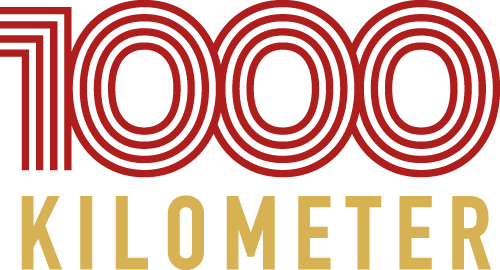1953 to 1959
Flashback
The early years
From the very beginning, the 1000 kilometer race has been part of the newborn sports car world championship.
The ADAC, as organizer, applies to the FIA for an endurance race in Germany. At the time, only the Nürburgring was considered as a venue.
Since the races in the new championship have to cover a minimum distance of 1,000 kilometers, it is very quickly decided that the race will cover precisely this distance. Finally, on August 30, 1953, the starting flag falls for the first time for the 51 qualified vehicles, which are sent on the long journey through the Eifel forests in eight different classes.
1953
The first overall winners in 1953. Alberto Ascari and Giuseppe Farina (McAfee archive)
1953
Hans Herrmann and his American co-pilot Jack McAfee next to their Maserati in the pits (McAfee archive)
1955
Herbert Linge steers his Porsche 550RS into the south turn. Behind him, with start number 3, the Portuguese Joaquim Felipe Nogueira also on Porsche 550RS (Archiv Linge)
1956
The Aston Martin of Peter Collins and Tony Brooks in the industrial warehouse (Völker-Richarz archive)
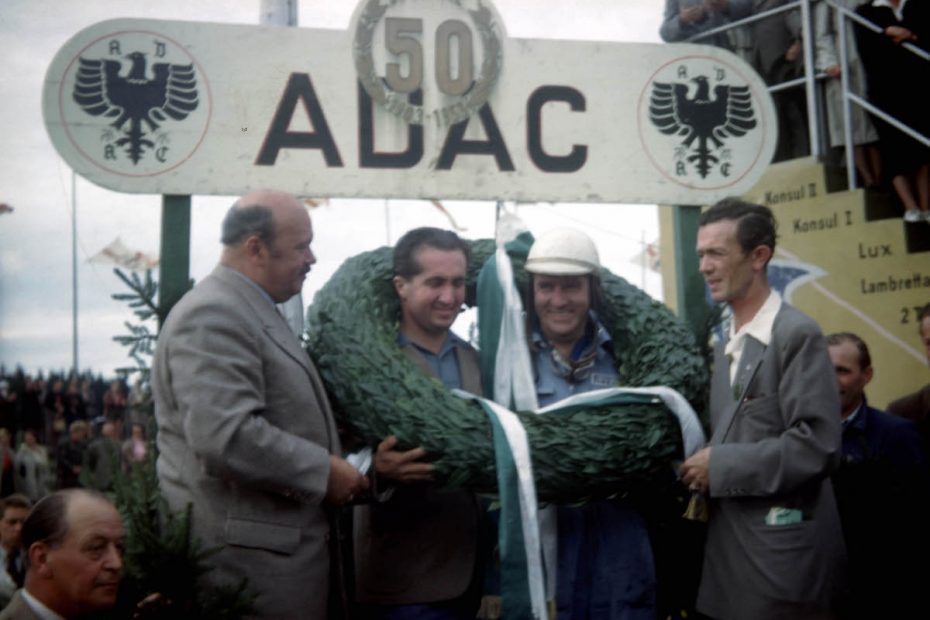
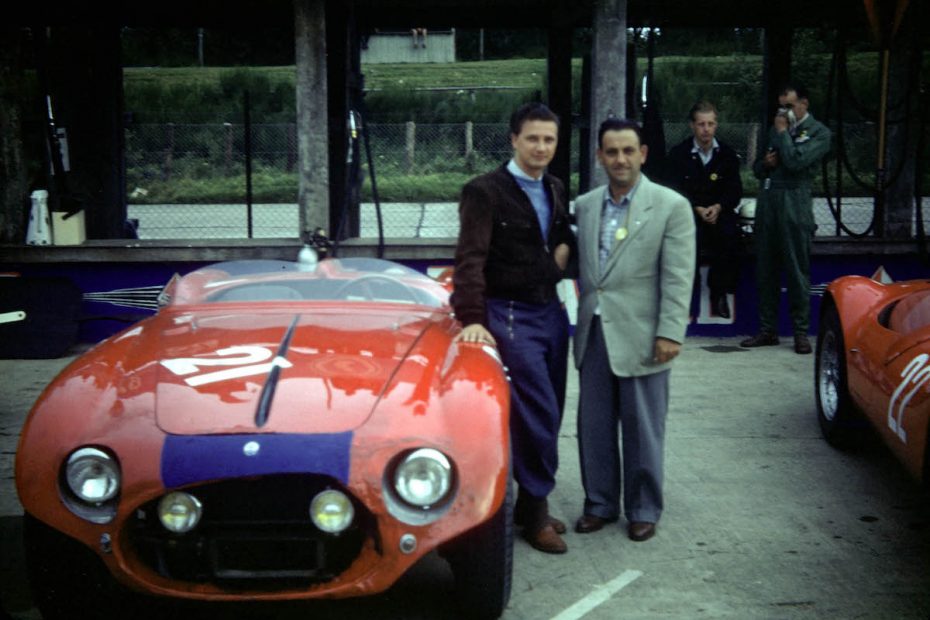
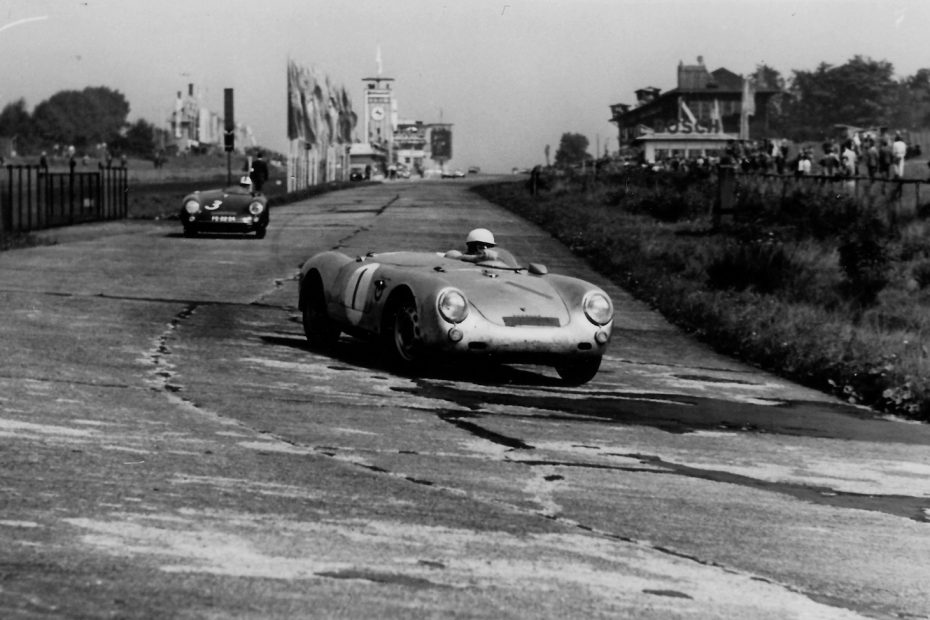
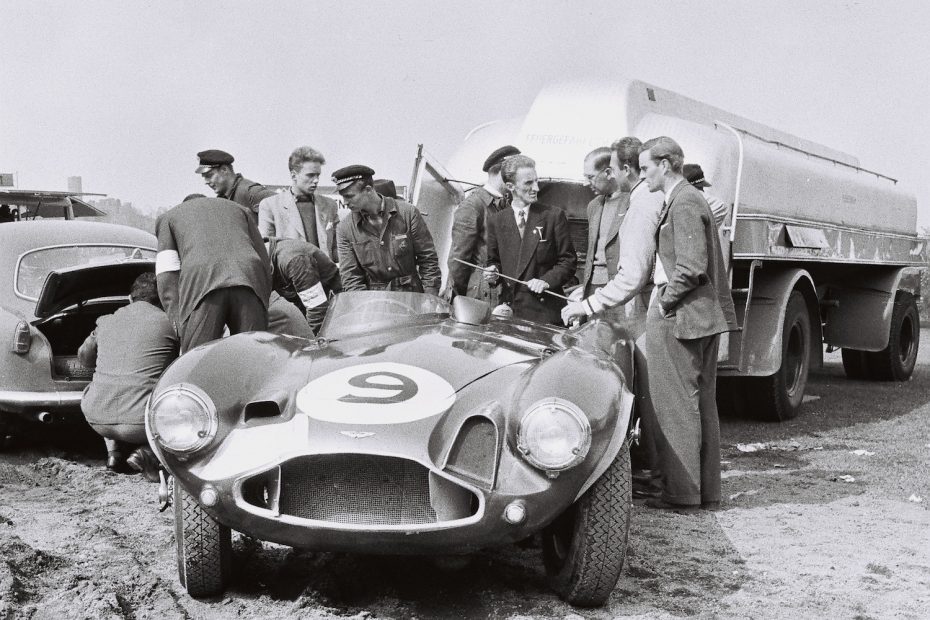
Large starting fields with several different vehicles in the various sports car classes have been a trademark of the race over the years. So it's not just about the overall victory, which the big manufacturers decide among themselves anyway, but also about the countless class victories, which are fought for by the drivers of the smaller vehicles with just as much dedication and heart and soul.
The first overall victory goes to Scuderia Ferrari, whose two star drivers Alberto Ascari and Giuseppe Farina bring the laurels to Italy. The two need a full eight hours and twenty minutes in their 375 MM for the 44 laps.
1956
Radio reporter Günther Isenbügel at the wheel of a Ford Thunderbird. The racing reporter sank the good piece during the race behind the hedges in the Hatzenbach (archive Völker-Richarz)
1956
The Mercedes-Benz 220S of Erwin Bauer and Walter Heeks has run out of cooling water (Völker-Richarz archive)
1956
Mechanics working on a Jaguar D Type in the paddock (Völker-Richarz archive)
1957
Start of the 1000 kilometer race 1957 (Völker-Richarz archive)
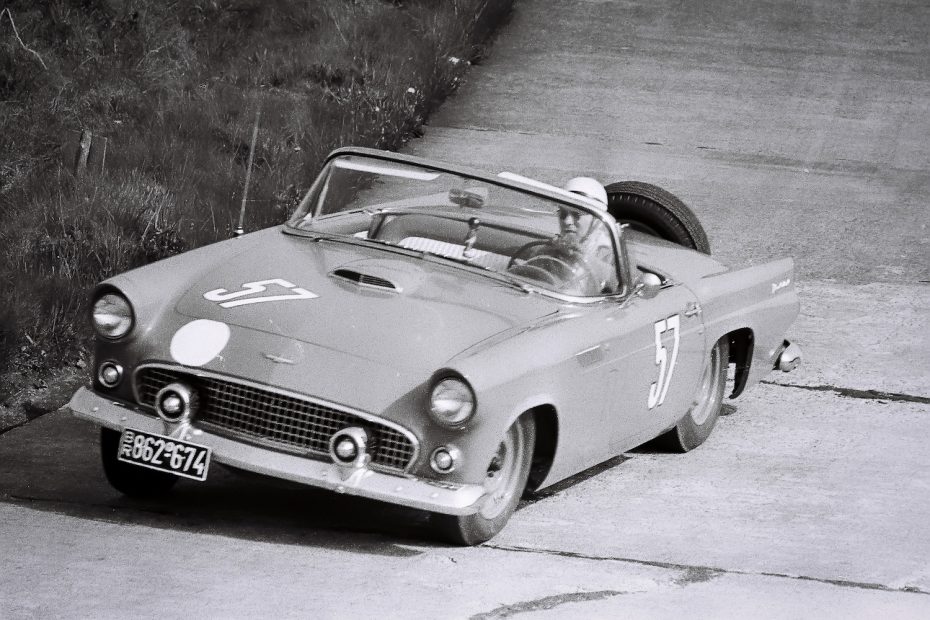
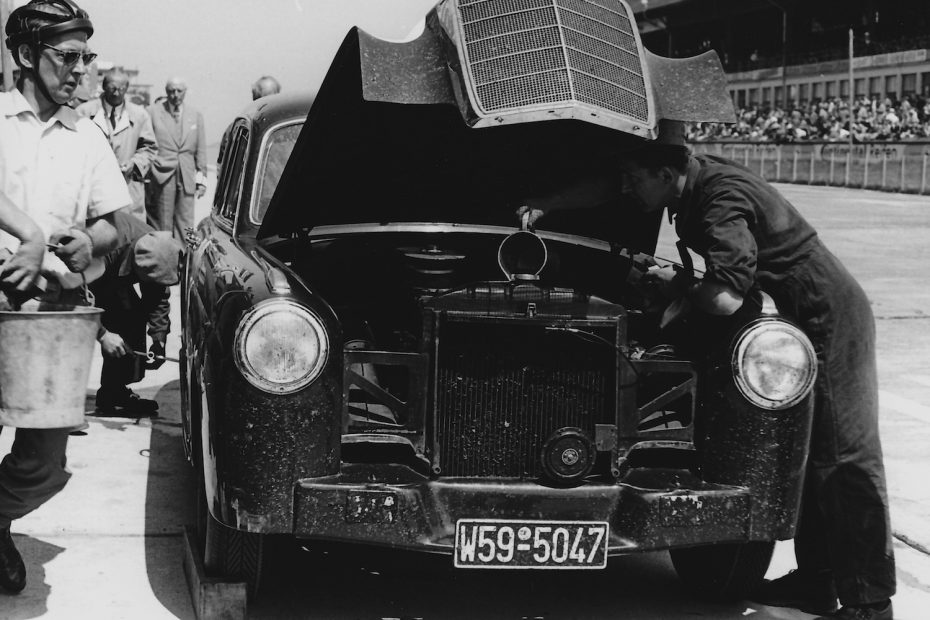
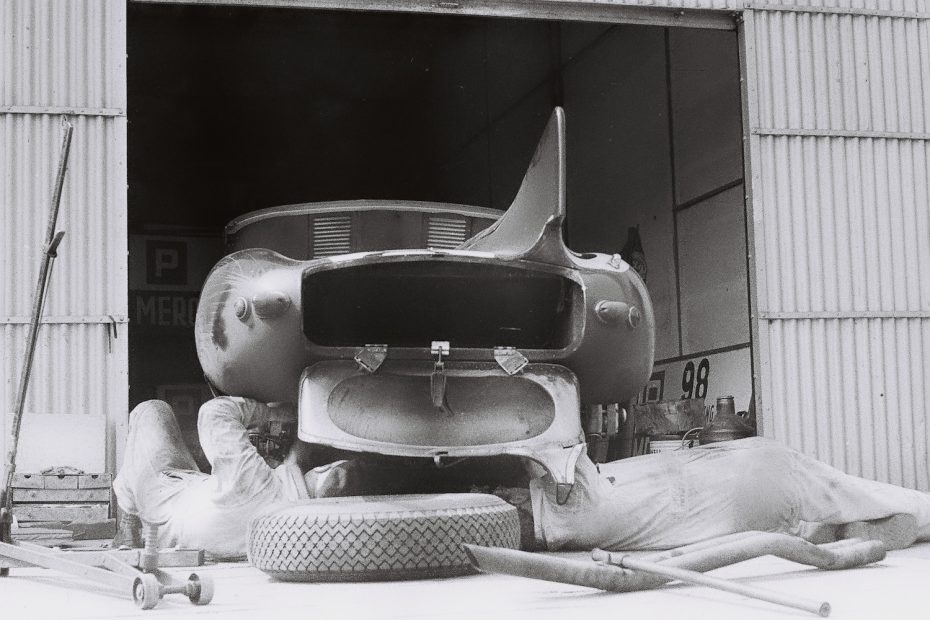
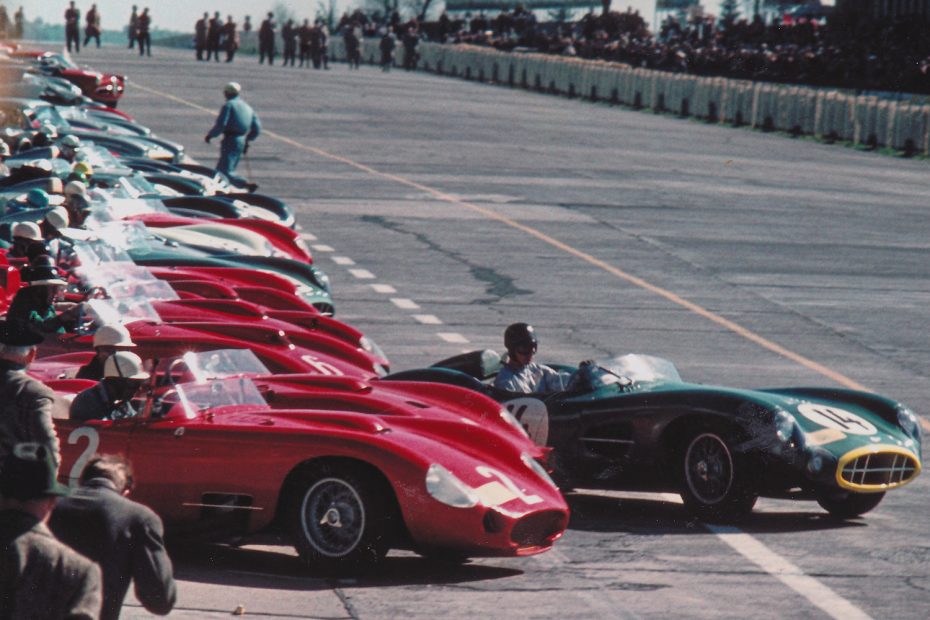
The second 1000 kilometer race scheduled for August 29, 1954 does not take place. A bitter setback so soon after the hopeful start. The reason lies in the non-participation of Mercedes-Benz. The Stuttgart company concentrated fully on Formula 1 and surprised the ADAC with its unexpected withdrawal. But without Mercedes, spectators would develop little interest. In order to avert a financial disaster, the organizer therefore has no choice but to cancel the race, for which the club had already drummed up support on the cover of its "Motorwelt" magazine.
The fact that a 1000 kilometer race does not take place in 1955 has a different and very tragic reason: at the 24-hour race in LeMans, more than 80 spectators die in the biggest disaster in the history of automobile racing. A veritable wave of cancellations, ranging from Formula 1 to sports cars, then sweeps the motorsport world. The 1000 kilometer race is also affected. At least a 500 kilometer race for the smaller sports cars up to 1500 cc is held as a "stopgap".
1957
An outsider in the pits: the Ferrari 750 Monza of Antonio Creus and Freddy Rousselle. (Völker-Richarz archive)
1958
Porsche Klassensieg für Edgar Barth, Richard von Frankenberg und Carol Godin de Beaufort (Archiv Barth)
1959
Start of the 1000 kilometer race 1959 (Archive Luck)
1959
1959: Four overall victories in the 1000 kilometer race - Stirling Moss (Luck archive)
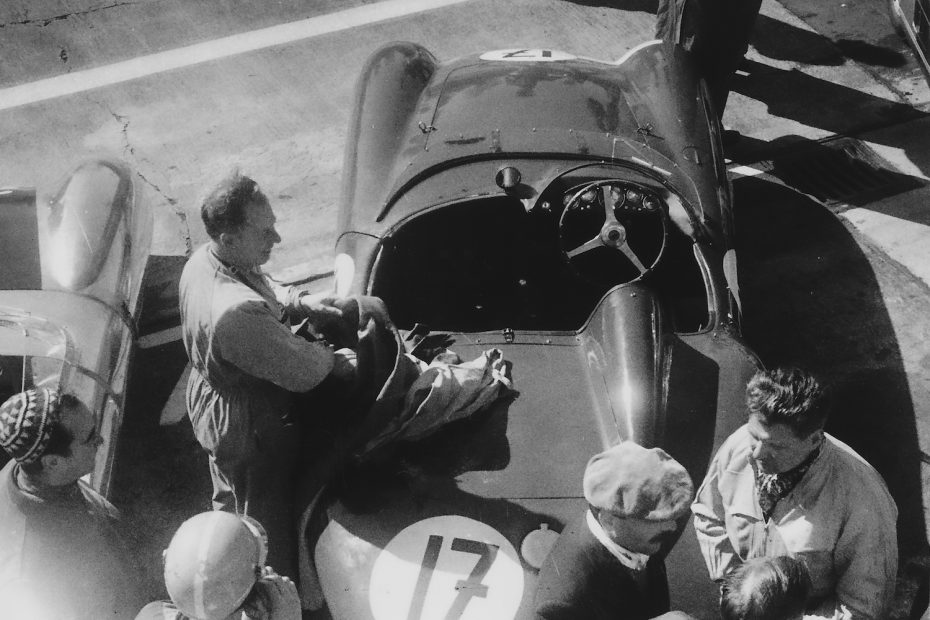
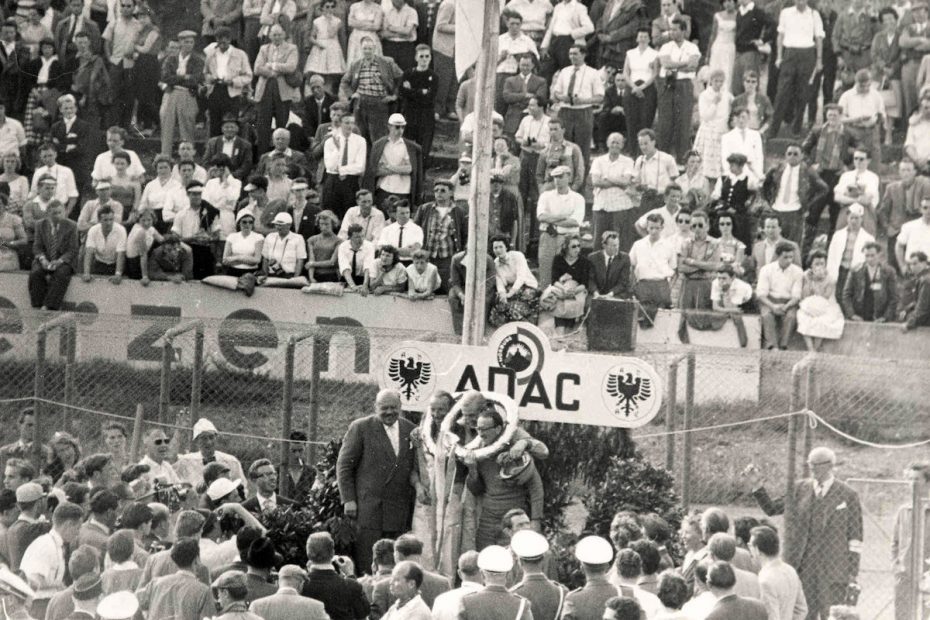

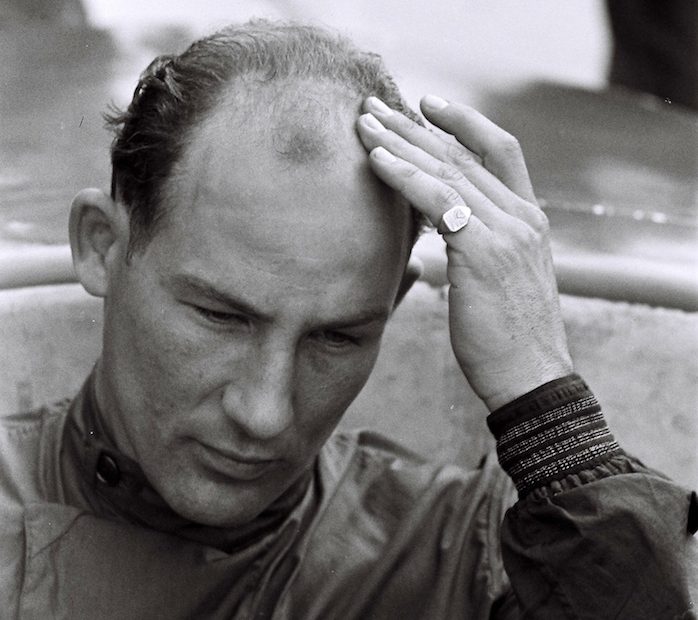
The four other races in the 1950s, however, go ahead as planned. In 1956, the winner is a Maserati with no less than four drivers - one of them is Stirling Moss - who subsequently finishes three more races as the winner and is thus allowed to put on the crown of the most successful driver of the "1000 kilometers". His four overall victories, twice for Maserati and twice for Aston Martin, have not been matched by any other driver.
Every time, Moss manages to relegate the race cars from Maranello in Italy, which are considered to be the heavy favorites, to their places, although Ferrari has up to four works cars on the grid and, with drivers such as Juan Manuel Fangio, Phil Hill, Eugenio Castellotti, Mike Hawthorn, Peter Collins, Luigi Musso, and last but not least Wolfgang Graf Berghe von Trips, truly brings the crème de la crème of the world's elite of the time to the Nürburgring. The German flag is held high by Porsche. With their "small" sports cars in the 1.5-liter class, the Swabians achieved a large number of class victories until they finally managed their first overall victory in 1967. But we are not there yet. Porsche's driver lineup in the 1950s includes names such as Richard von Frankenberg (a journalist and for a few years also a track announcer at the Ring), Harry Schell, Paul Frére, Edgar Barth, Joakim Bonnier, Umberto Maglioli, and Hans Herrmann, to name just a few.
Amateur drivers from England are welcome guests at the races of the 1950s and 1960s, bringing all kinds of often adventurous vehicles to the Eifel. For years, they dominated the small prototype classes. Manufacturers such as Lola, Lotus, AC, MG, Austin Healey and Morgan enrich the starting fields and, together with the vehicles in the small GT classes, ensure that the Nordschleife is kept busy.
